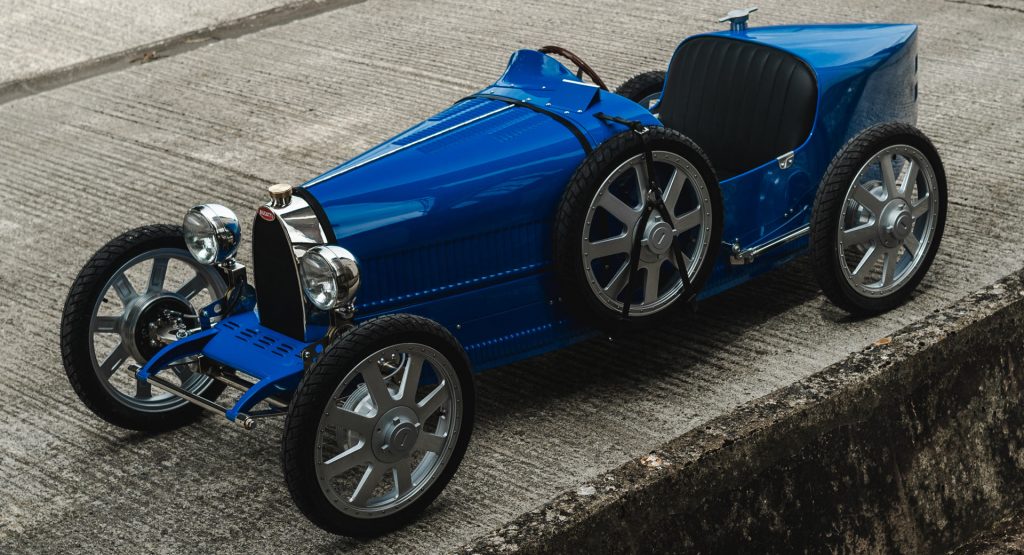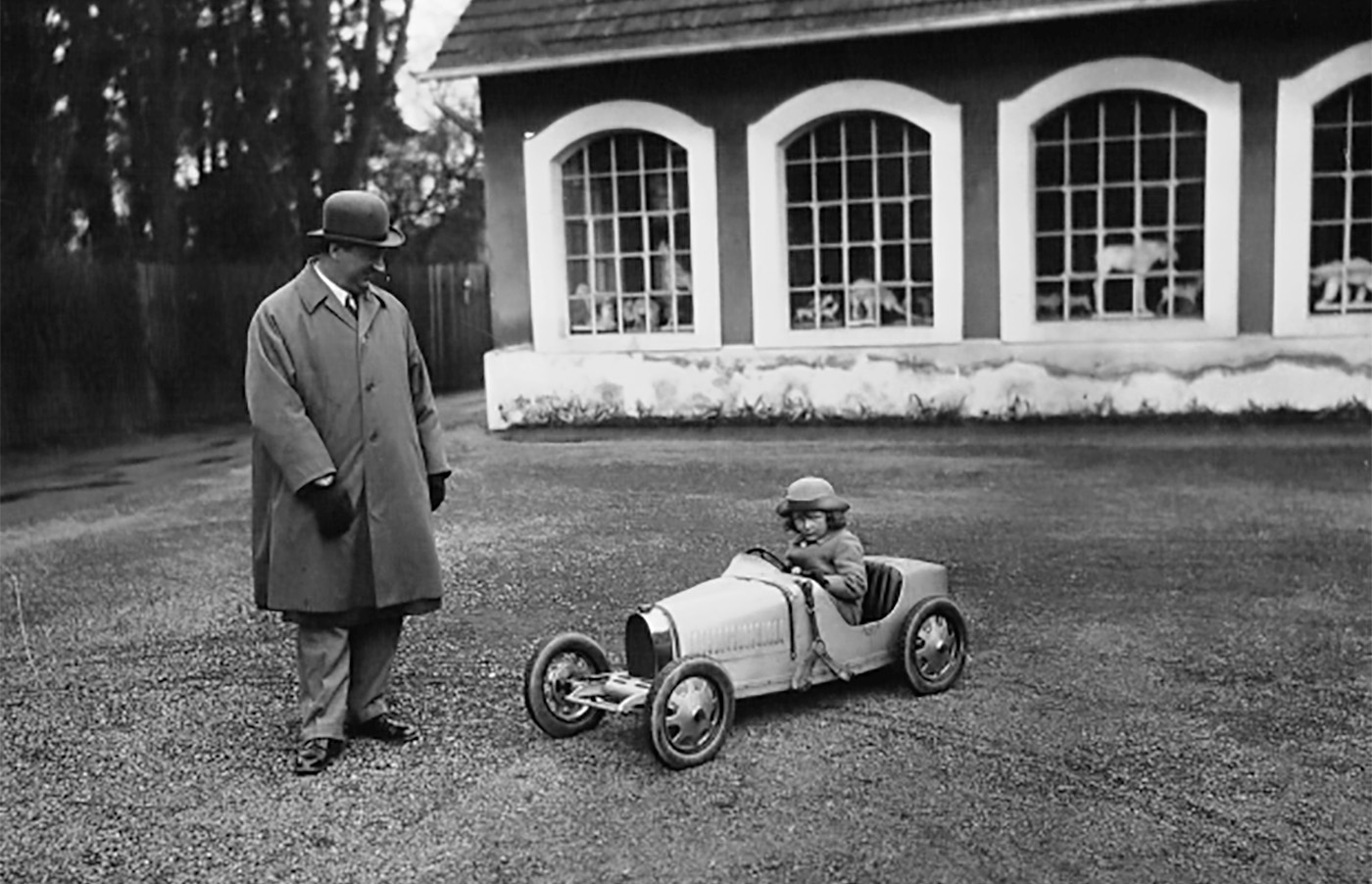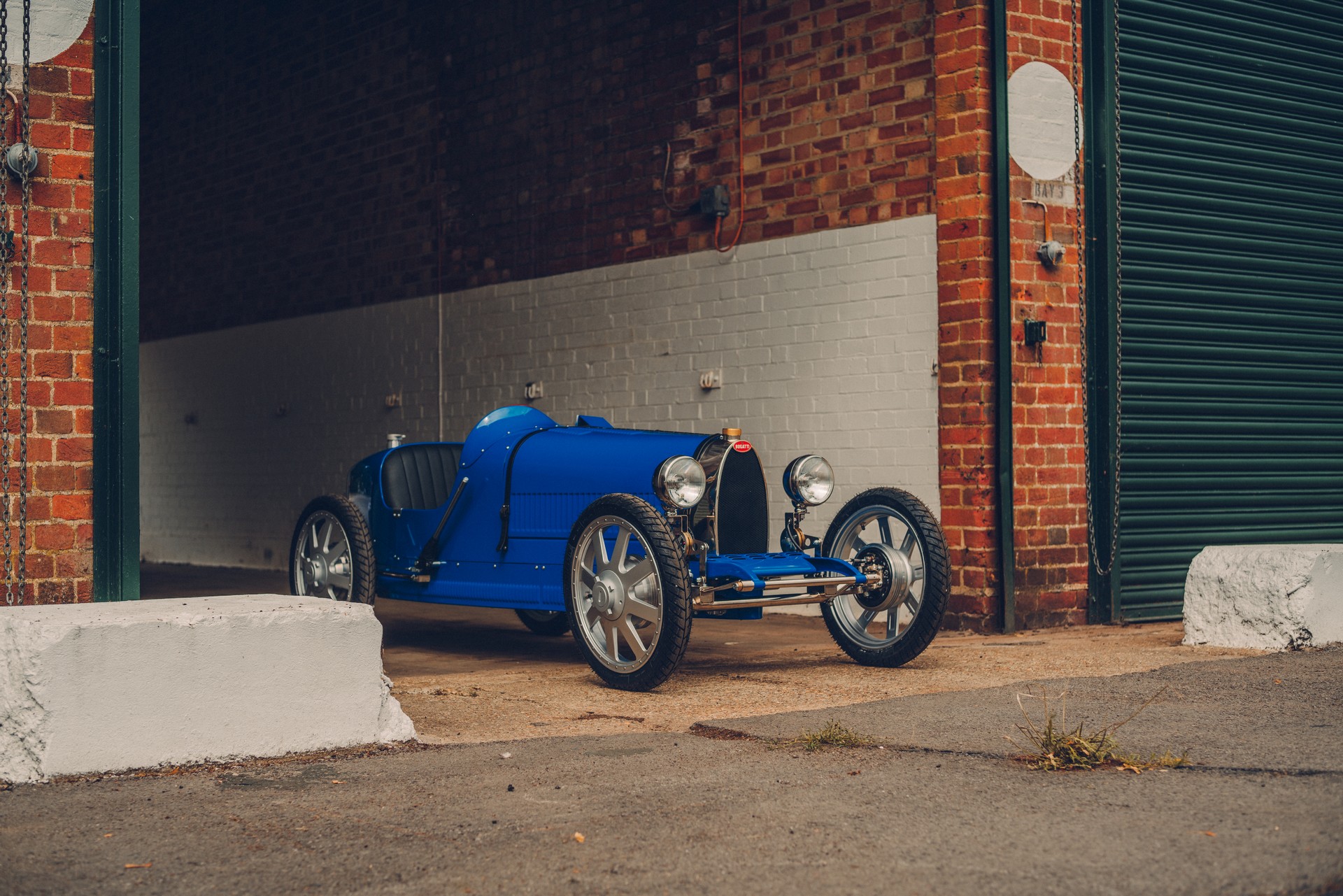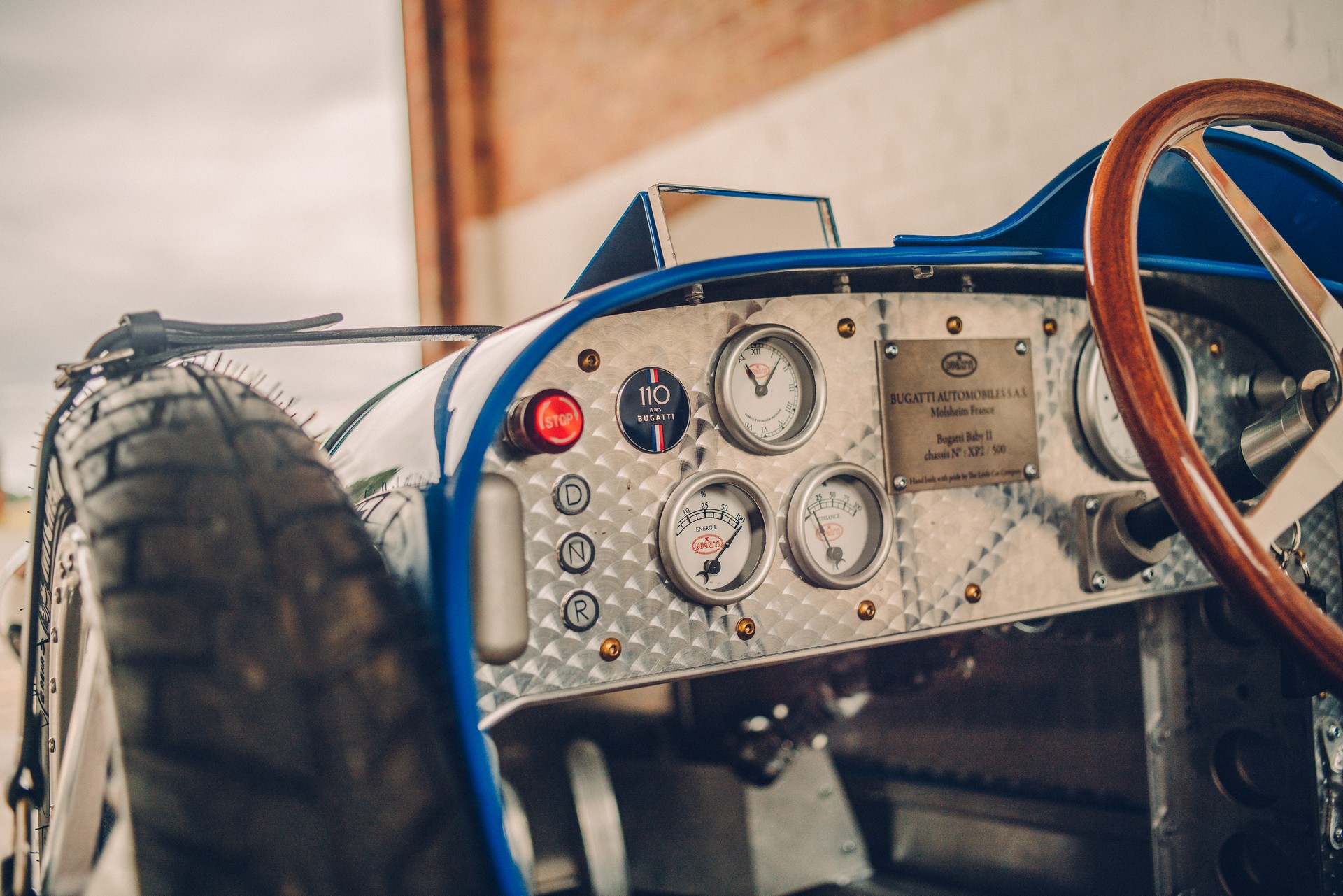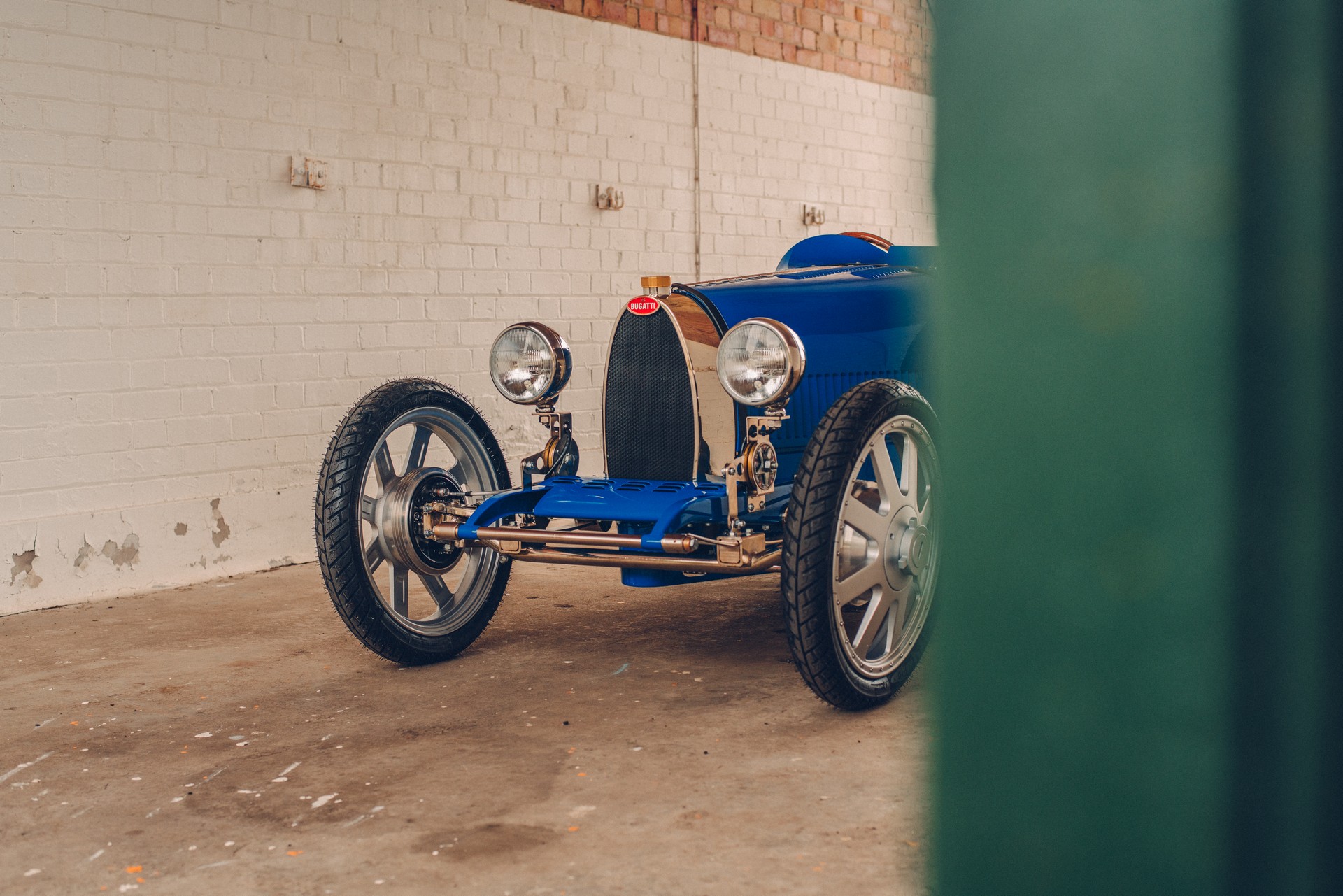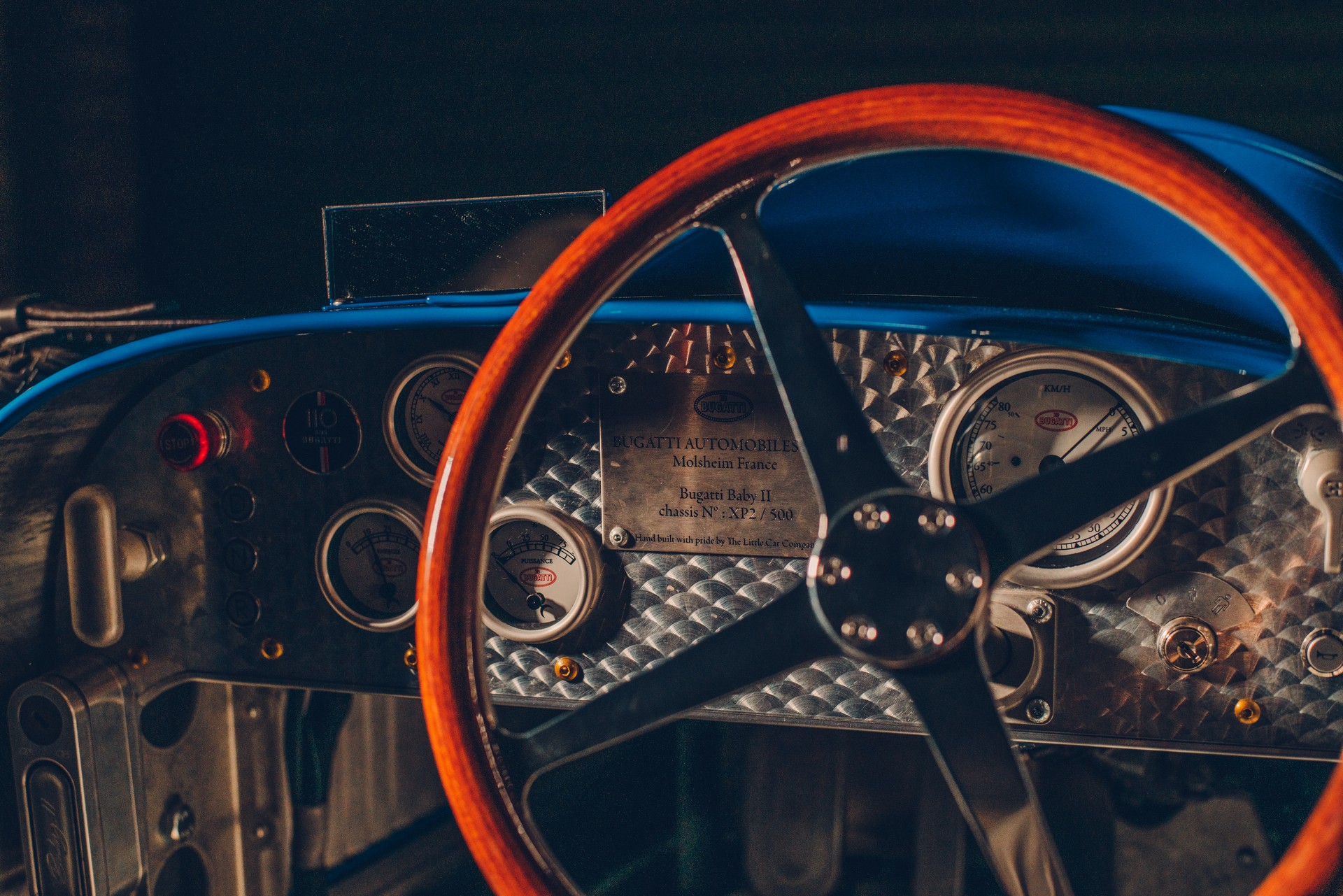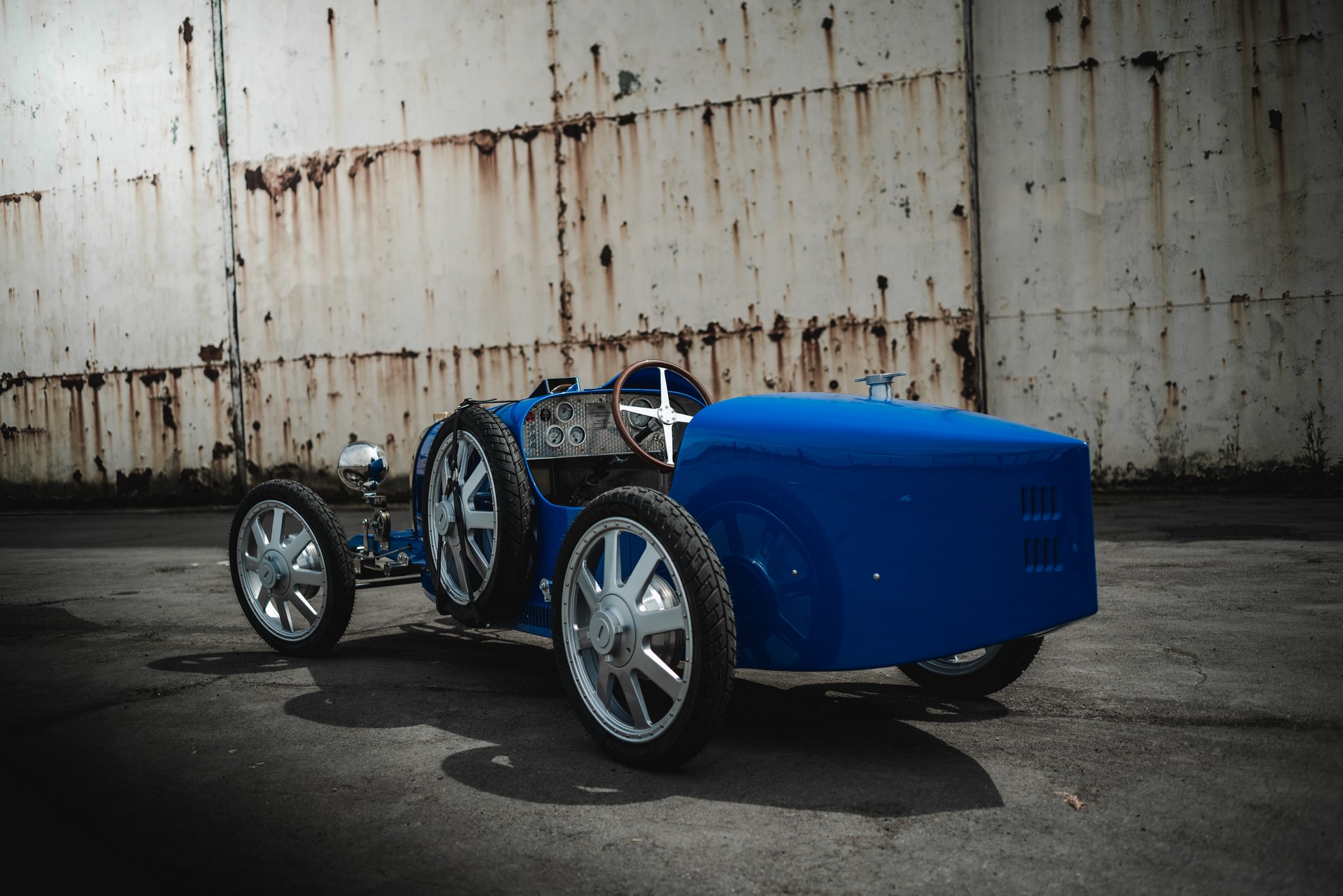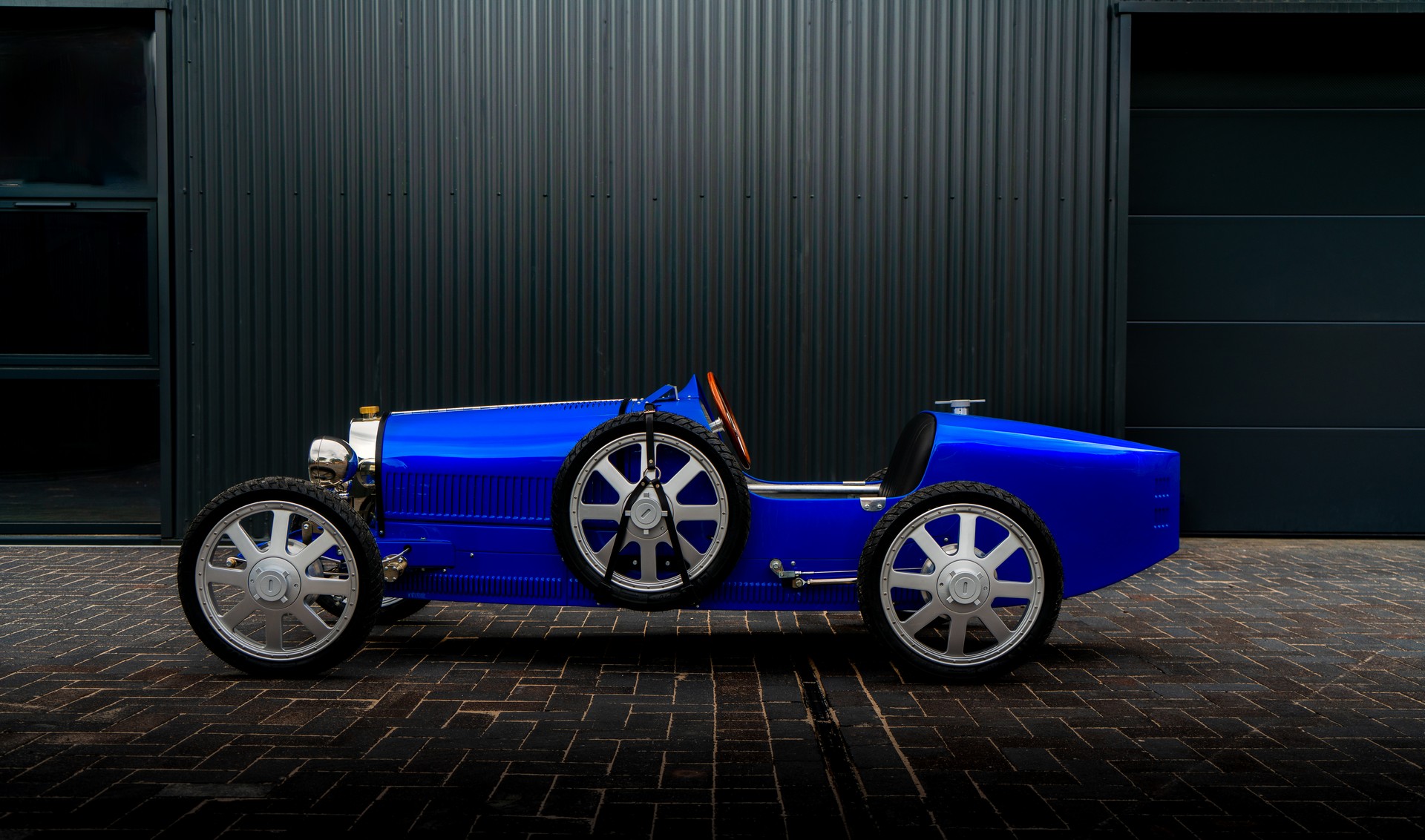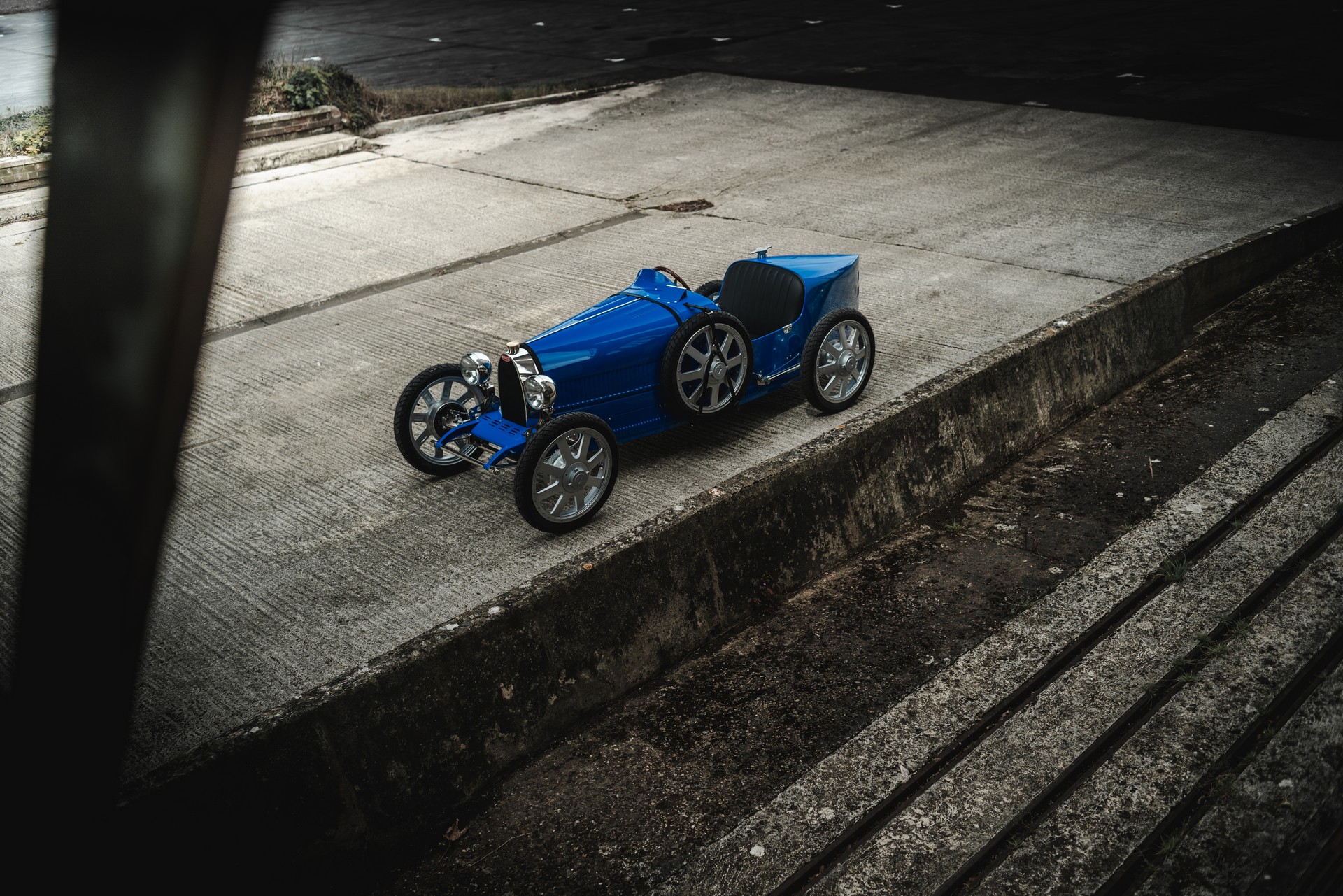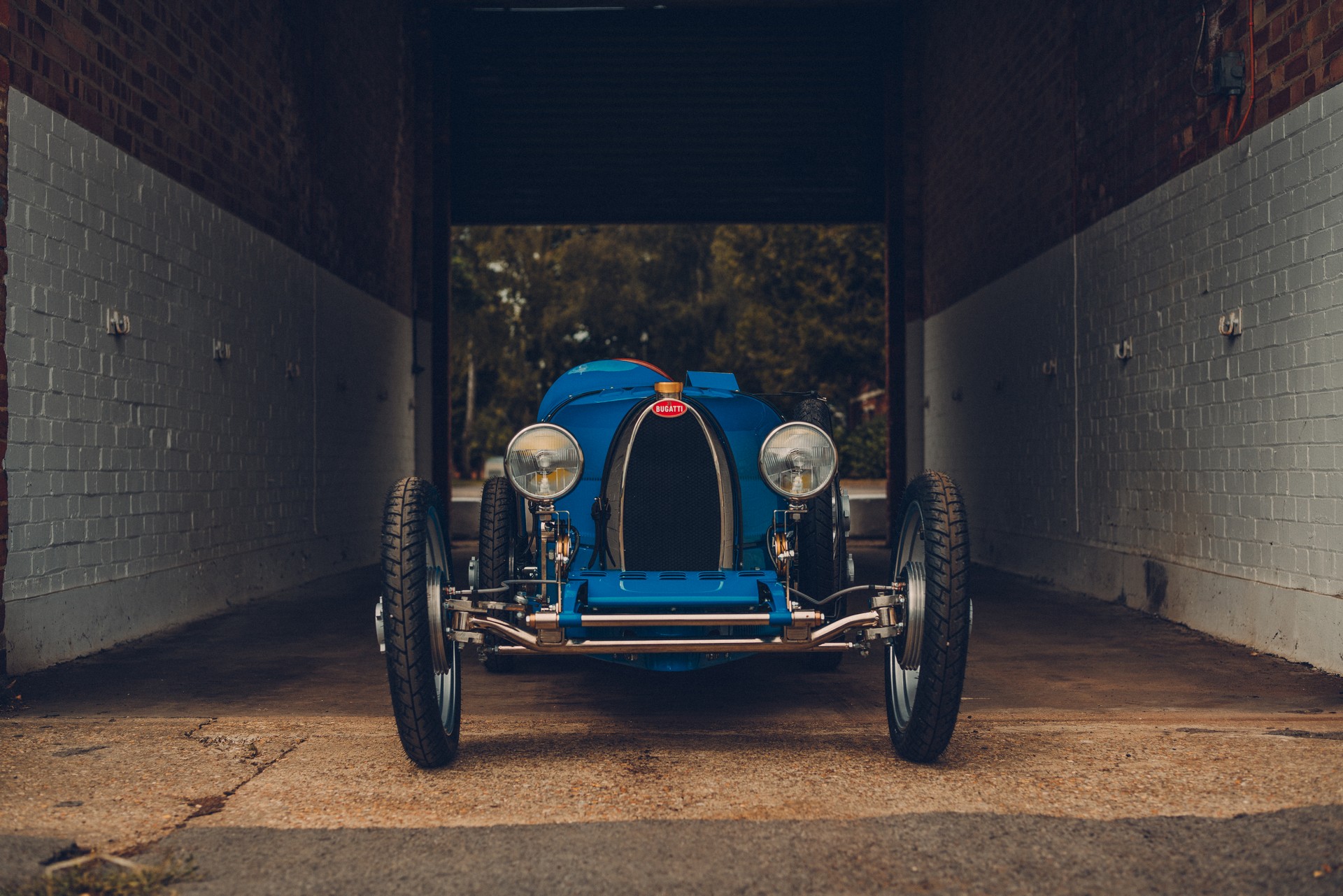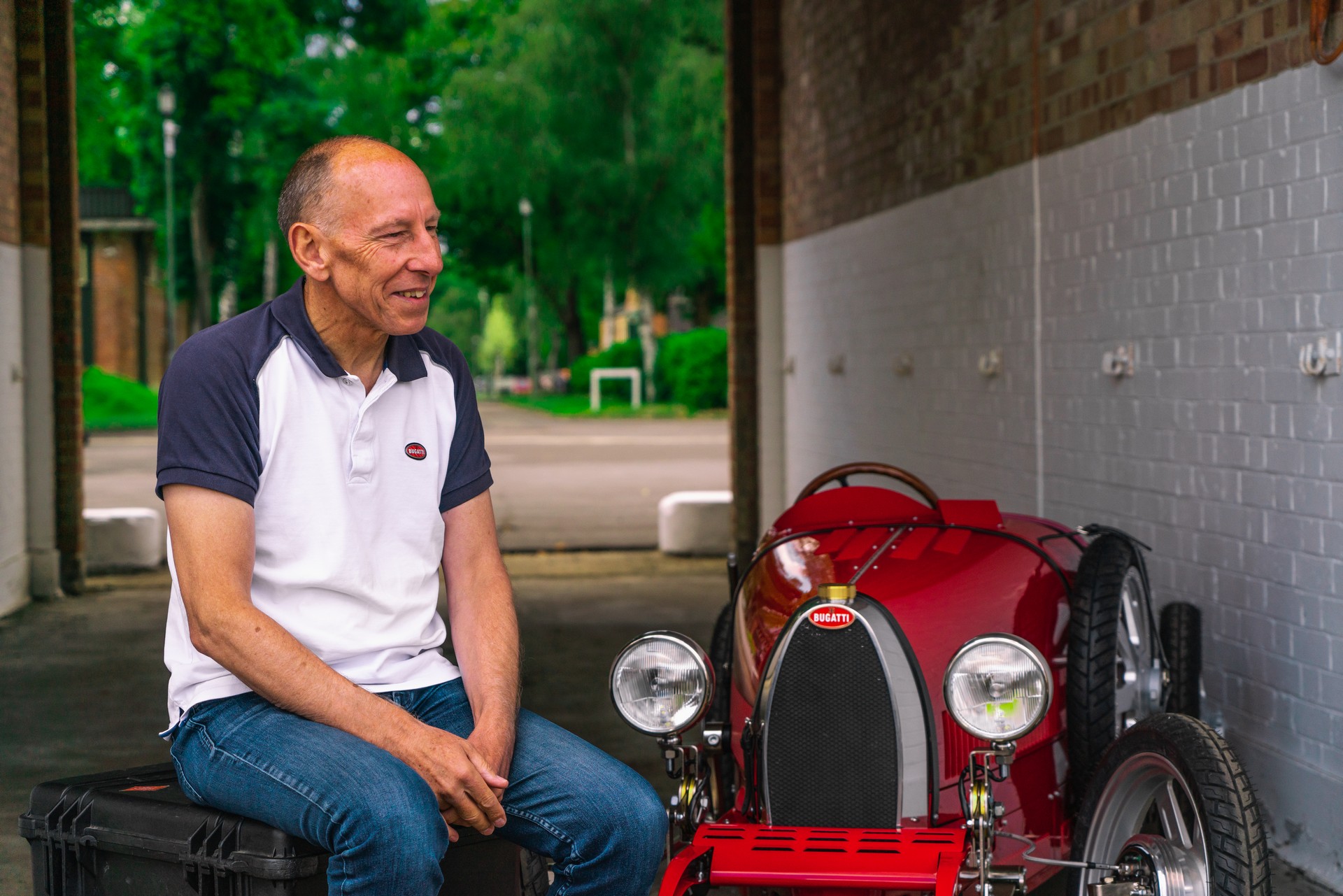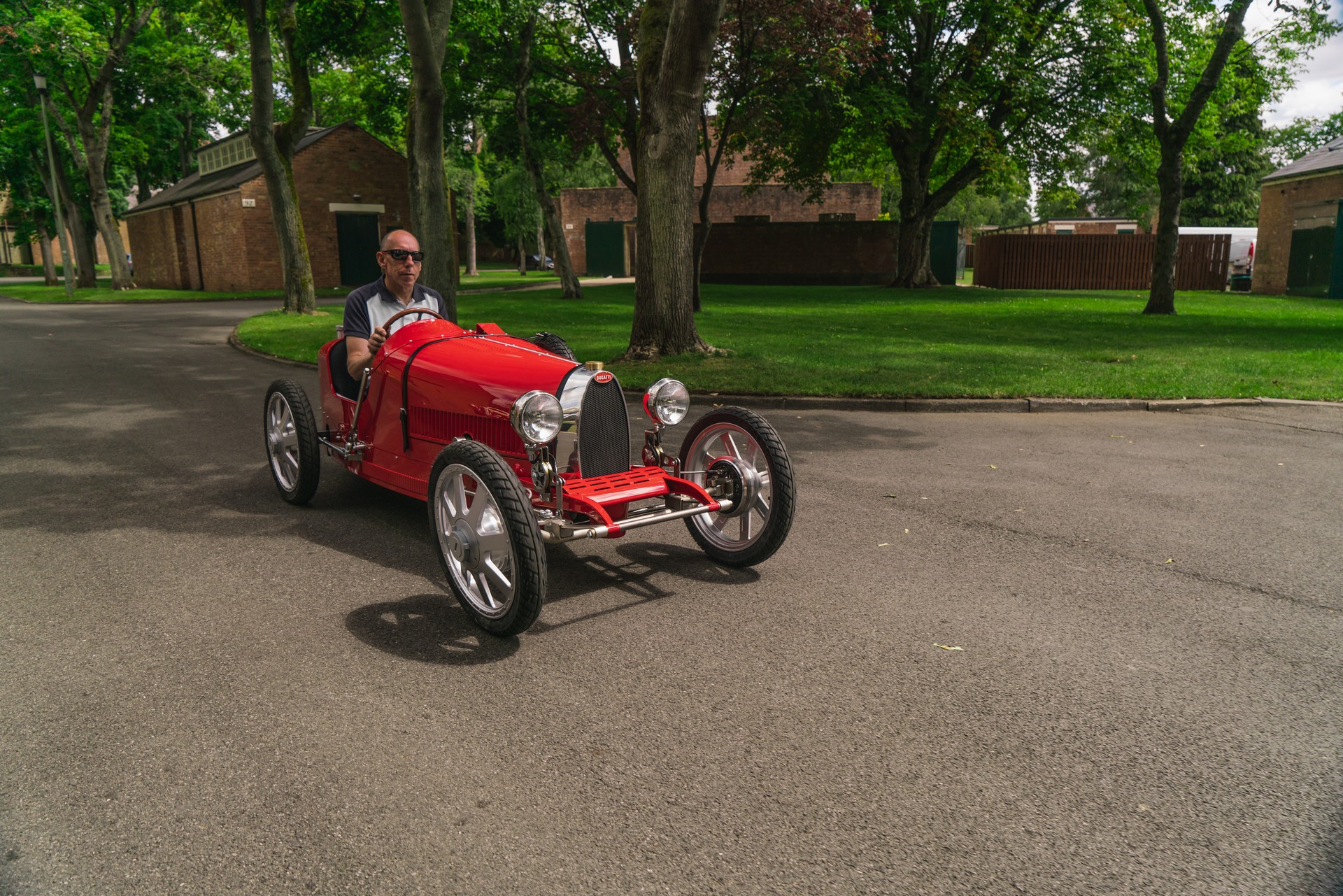There’s been a lot of talk about Bugatti’s ‘second model’ and it’s finally gone into production.
However, it’s not a crossover or the 16C Galibier. Instead, it’s the Baby II which was unveiled at last year’s Geneva Motor Show.
Jointly developed with The Little Car Company, the model draws inspiration from the original Baby which was a scaled-down version of the Type 35. The car was built by Ettore Bugatti to celebrate the fourth birthday of his youngest son, Roland. While the model was envisioned as a one-off, it proved so popular that it went into production and was sold between 1927 and 1936.
Also Read: Bugatti Type 35 ‘Baby’ Returns With A Modern Twist And €30,000 Starting Price
The Baby II is a continuation of that idea, but it’s significantly larger than the half scale original which could barely accommodate an eight year old. That being said, the Baby II is still small as it’s a 75% scale model.
Designed for people 14 years and up, the Baby II is available in three different configurations. The base model has a composite body and a 1.4 kWh lithium-ion battery which powers a rear electric motor. In Novice mode, the motor produces 1.34 hp (1 kW / 1.36 PS) and enables the car to hit a top speed of 12 mph (20 km/h). Expert mode increases the output to 5.36 hp (4 kW / 5.44 PS) and allows the model to hit 30 mph (45 km/h).
The performance features don’t end there as the Baby II has a limited slip differential and a high-performance hydraulic braking system.
Customers can also opt for a Vitesse variant which has a carbon fiber body, a 2.8 kWh battery and an upgraded powertrain with a Chiron-inspired Speed Key. The latter unlocks a high-performance mode which enables the motor to produce 13.41 hp (10 kW / 13.60 PS). This enables the car to run from 0-37 mph (0-60 km/h) in approximately six seconds, before hitting a top speed of 42 mph (70 km/h).
Sitting at the top of the range is the Pur Sang which is aimed at collectors. It has the same powertrain as the Vitesse, but features hand-formed aluminum bodywork which takes more than 200 hours to create.
Thanks to a regenerative braking system, the base model has a range of 15.5 miles (25 km). The larger battery pack in the Vitesse and Pur Sang increases that to 31+ miles (50+ km). That’s kind of impressive for a toy car and Bugatti noted the battery pack is replaceable and can be “swapped out in a matter of seconds.”
Speaking of performance, Bugatti says the handling is “completely true” to the Type 35 as they performed a 3D scan of an original Lyon GP car and used an identical geometry and suspension for the Baby II. However, the model does incorporate a modern touch in the form of adjustable dampers. That being said, people who have driven the model have described it as “more of an unruly teenager than a baby.”
Moving into the cabin, there’s a quick release steering wheel that allows for easy entry and egress. The model also has a turned aluminum dashboard with replicas of the Type 35’s gauges. However, the fuel pressure gauge is now a battery gauge and the oil gauge has been transformed into a power gauge.
Elsewhere, there are billet aluminum pedals and a fuel pump handle that acts as a gear selector. The model also has LED headlights and a Bugatti ‘Macaron’ badge which is made from 50 grams of solid silver.
Like all modern Bugattis, the Baby II is customizable. Customers can pick from an extensive selection of interior and exterior colors, including those used on the Chiron. There’s even an online configurator which can be accessed here.
Production will be limited to 500 units and pricing starts at €30,000 ($34,795 / £27,325). However, you’ll have to shell out €43,500 ($50,448 / £39,626) for the Vitesse and €58,500 ($67,845 / £53,282) for the Pur Sang.
That’s real car money, but there’s an undeniable charm about the Baby II. As an added bonus, buyers will receive a membership in The Little Car Club and the Bugatti Owners’ Club. This allows them to attend events where their children and grandchildren can drive the Baby II on famous racing circuits.








